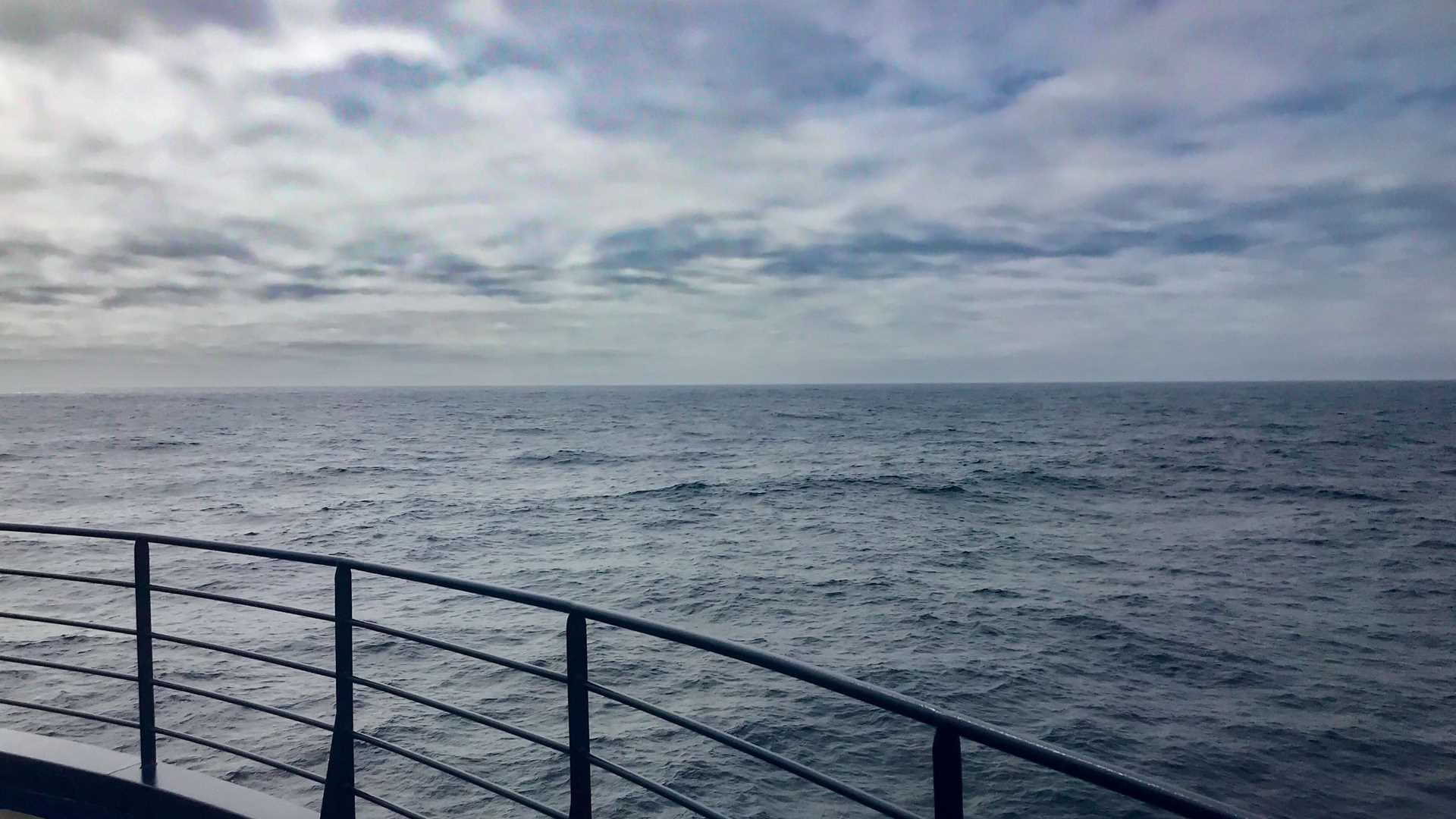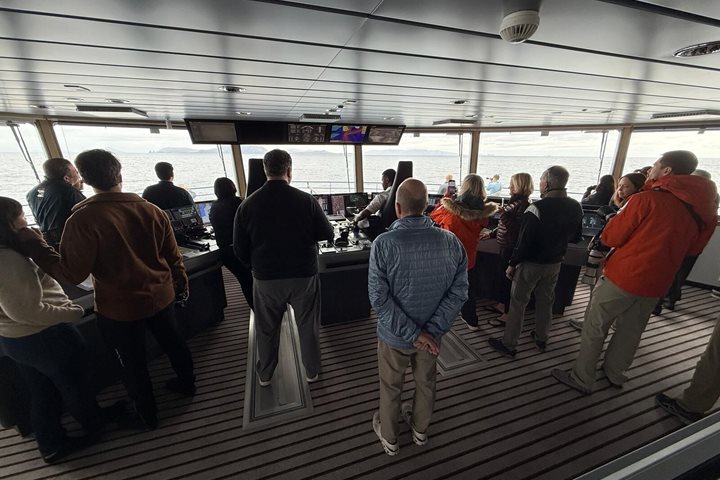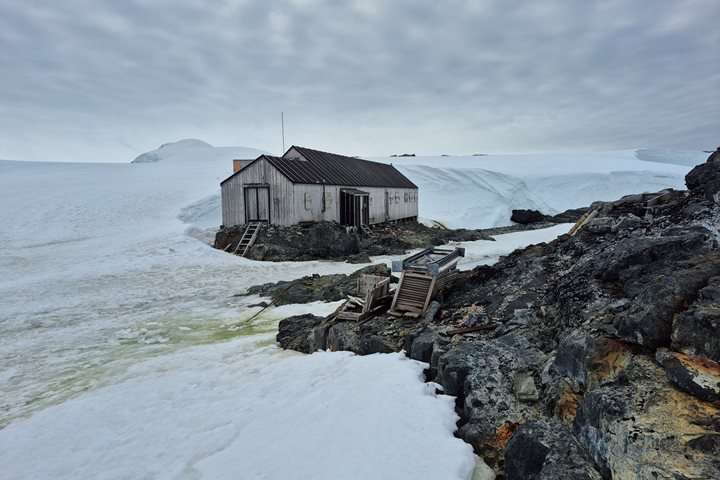Our days in Antarctica have ended, and it was time to re-enter the Drake Passage and make our way back to South America. The ship’s motion was noticeable, but many of us were out and about to enjoy the day at sea. We learned from presentations, relaxed together, edited photos, and enjoyed delicious meals.
It mostly was a time to reflect. There was that incredible solstice “sunset/sunrise.” Memories of polar plunging on Christmas. Time spent observing whales and seals or marveling at the ice sculpture gardens. And of course, we recalled the penguins. No one can ever spend enough time with penguins, but we have photos and videos to make us smile for years to come.







